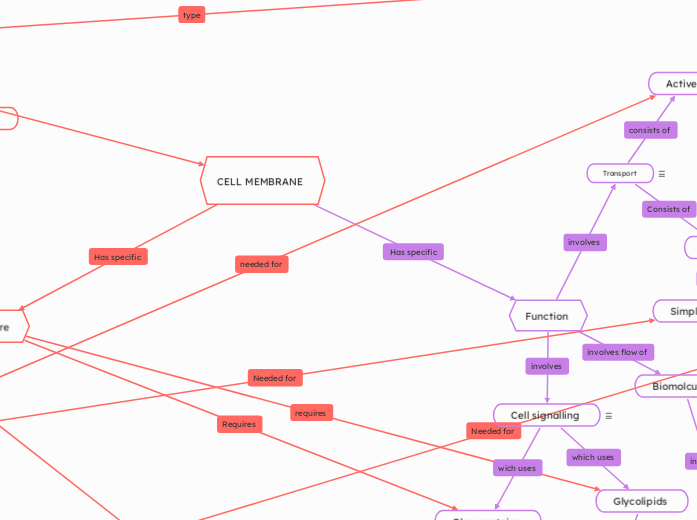CELL MEMBRANE
Structure
Phospholipid bilayer
Hydrophilic head
Hydrophobic tail
integral Proteins
channel proteins
carrier proteins
Aquaporins
Kidney
Nephrons
distal tubule
urine
Bownsman capsule
filtrate
glomerulus
Blood
convulated tubule
fluid balance
hormones
loop of Henle
water reabsorption
Sodium potassium pump
ATP
mitochondria
protein receptors
Glands
target cells
Function
Transport
Active
Passive
Simple diffusion
Facilitated diffusion
Osmosis
water
Photosyntheisis
Light dependent reaction
light energy
H2O
chlorophyl
NAD+
light independent reaction
CO2
NADPH
ATP
glucose
Cell signalling
Glycolipids
nerve signals
Nueron
central nervous system
Brain
Hypothalamus
pituray gland
hormones
neural pathways
Autonomic nervous system
parasympathetic
rest or digets
Acetylcholine
neurotransmitter
synapse
neuron axon terminal
axon terminal
sympathetic
fight or flight
norepinephrine/epinephrine.
Feed back loops
negtaive feed back loop
positive feed back loop
Spinal cord
Action potential
Deporalization
Resting membrane phase
Reporalization
Hyperplarization
Glycoproteins
Biomolcules
Carbohydrtaes
Glucose
Cellular respiration
Glycolysis
2 NADH
4 ATP
pyruvate oxidation
2 NADH
2CO2
Acetyl CoA
Krebs cycle
2 ATP
6 NADH
4CO2
2 FADH2
Electron transport chain
10 NAD+
32 ATP
2 FAD
6 H20
ATP Synthase
Coenzymes
NADH
FADH2
``````````
fermentation
oxygen
Lactic acid
2 net ATP
Alcohol
2 Net ATP
lipids
Cholesterol
Cellulose
Triglyceride
Proteins
Nucleic acids
DNA
DNA Replication
Identical DNA
5' to 3'
Transcription
RNA
tRNA
Anticodons
Amino acid
polypeptide chain
mRNA
codons
RNA polymerase
nucleotide bases
Adenine
thymine
Guanine
cytosin
Uracil
Template strand
coding strand
Translation
protein synthesis
